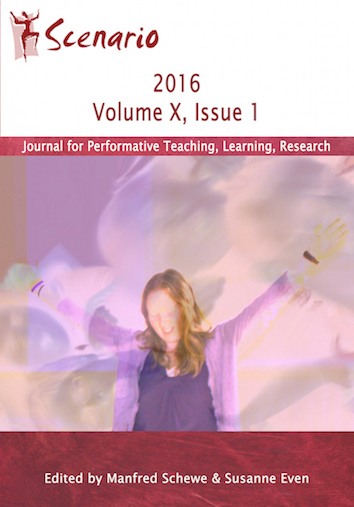Process Drama in the Japanese University Classroom: Phase Three, The Homelessness Project
DOI:
https://doi.org/10.33178/scenario.10.1.2Abstract
The purpose of this paper is to describe the third phase of a process drama project, which focused thematically on the social issue of homelessness. Two classes of the elective English Communication course took part in this project twice weekly for ten weeks, in which the students examined homelessness from the perspectives of Japanese-Americans incarcerated in internment camps during World War II. The goal of the project was for students to develop an understanding of homelessness, while simultaneously losing awareness of English as a dreaded examination subject, and using the target language as a viable communicative tool instead. The techniques used in this project were manifold: tableau, family role-play, class role-play, writing-in-role, reaction-writing, research online in both Japanese and English to examine the nature of propaganda, online class discussions, as well as a guest lecturer session with a refugee speaker1. The trajectory of this discussion moves along a traditional Japanese Noh theater three-part narrative arc, called Jo-Ha-Kyu , “Enticement?Crux?Consolidation”.Published
2016-01-01
Issue
Section
Articles
License
Copyright (c) 2016 the author(s)

This work is licensed under a Creative Commons Attribution-NonCommercial-NoDerivatives 4.0 International License.
How to Cite
Donnery, E. (2016). Process Drama in the Japanese University Classroom: Phase Three, The Homelessness Project. Scenario: A Journal of Performative Teaching, Learning, Research, 10(1), 18-32. https://doi.org/10.33178/scenario.10.1.2







